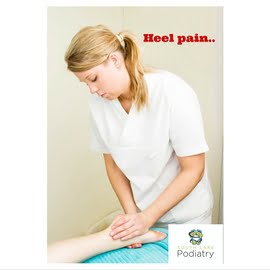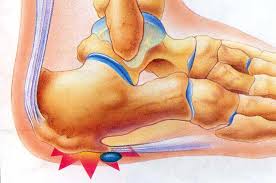Heel Pain/ Plantar Fasciitis/Arch and Heel Pain
This condition is created by the degeneration of the layer of soft tissue in your sole that covers the deeper muscles of the foot. These layers absorb shock and provide for normal biomechanics of the foot, and hold down the muscles so that the tendons can move to elicit movement of joints.
The fibrous tissue of this layer can start to degenerate due to many causes, causing plantar fasciosis. It is attached to the heel bone, so if you have abnormal position or biomechanics of this bone, the chance of developing plantar fasciosis increases. The following symptoms might give you a hint of plantar fasciosis:
Heel pain with the most tenderness at the medial border of your heel bone (towards the midline of the body). Heel pain upon first few steps in the morning.
Causes include:
- Supinated foot increasing tension on the plantar fascia
- Pronated foot associated with abnormal biomechanics of the area of the foot around the heel (the heel bone may be twisted inwards or outwards relative to the ground)
- Tightness of the plantar fascia itself
- Chronic overuse, exercise on hard surfaces
- Tight muscles of the posterior leg
- Systemic joint disease
Treatment
It is essential that treatment is commenced as early as possible to gain the best outcomes. Plantar fasciitis can be hard to treat if chronic, so don’t delay in making an appointment with one of our podiatrists. Treatment may consist of the following:
- Strapping
- Ultrasound and heat therapy
- Orthotics, either soft or custom-made using the Computer analysis or Gait scan (linked to them in treatments)
- Stretching and massage
- Extracorporeal / radial shockwave therapy (linked to them in treatments)
- Footwear advice and prescription


